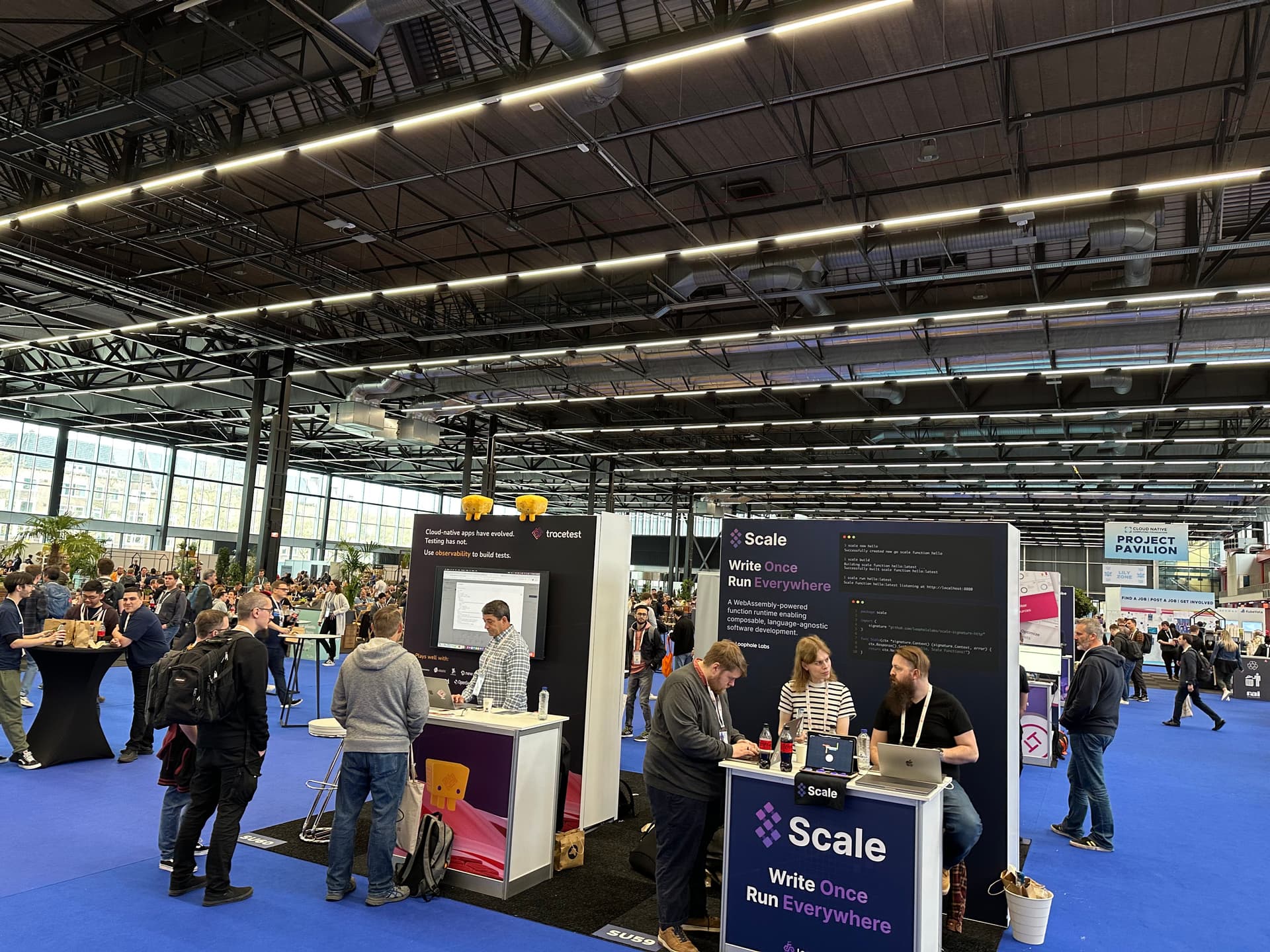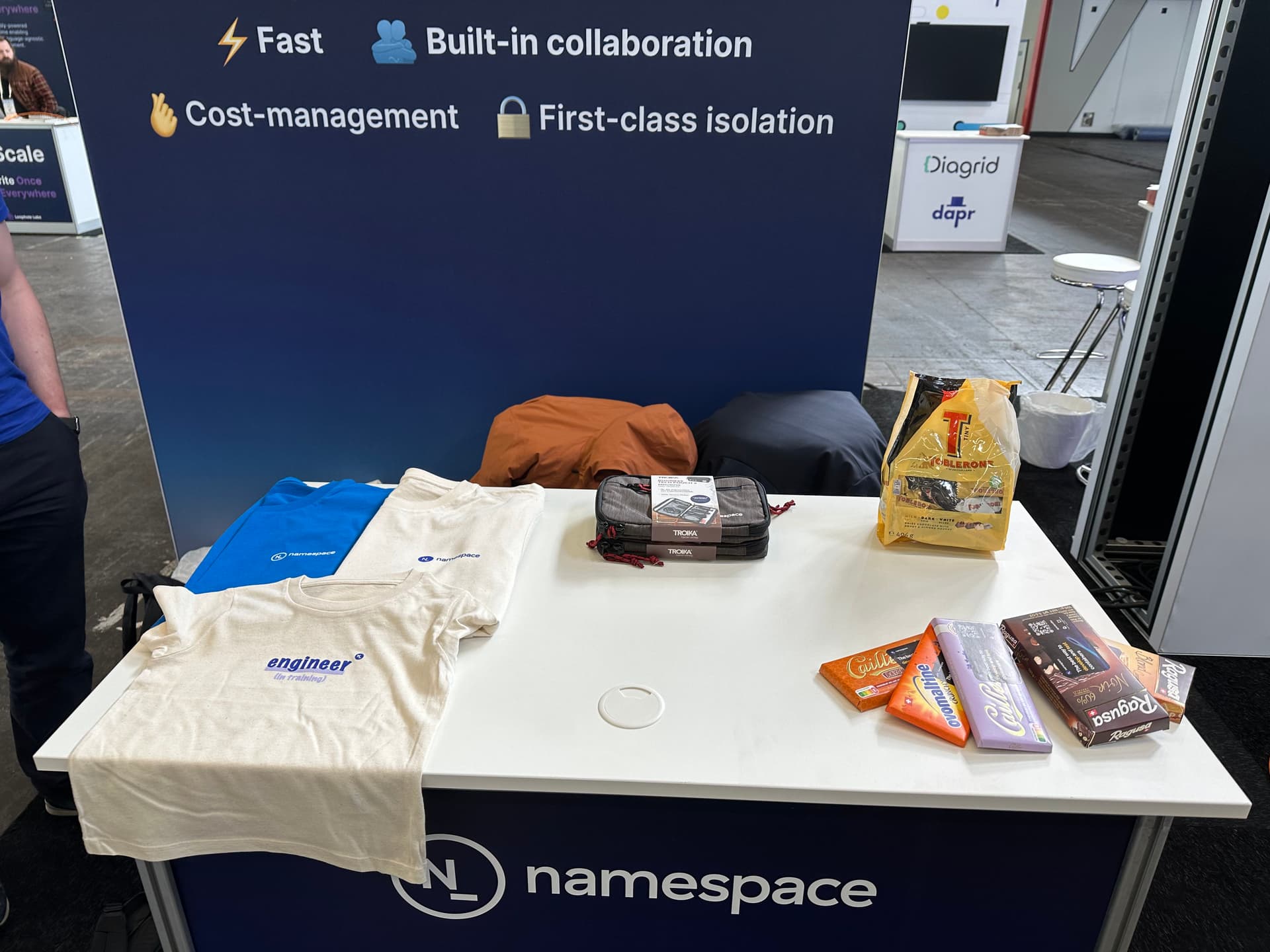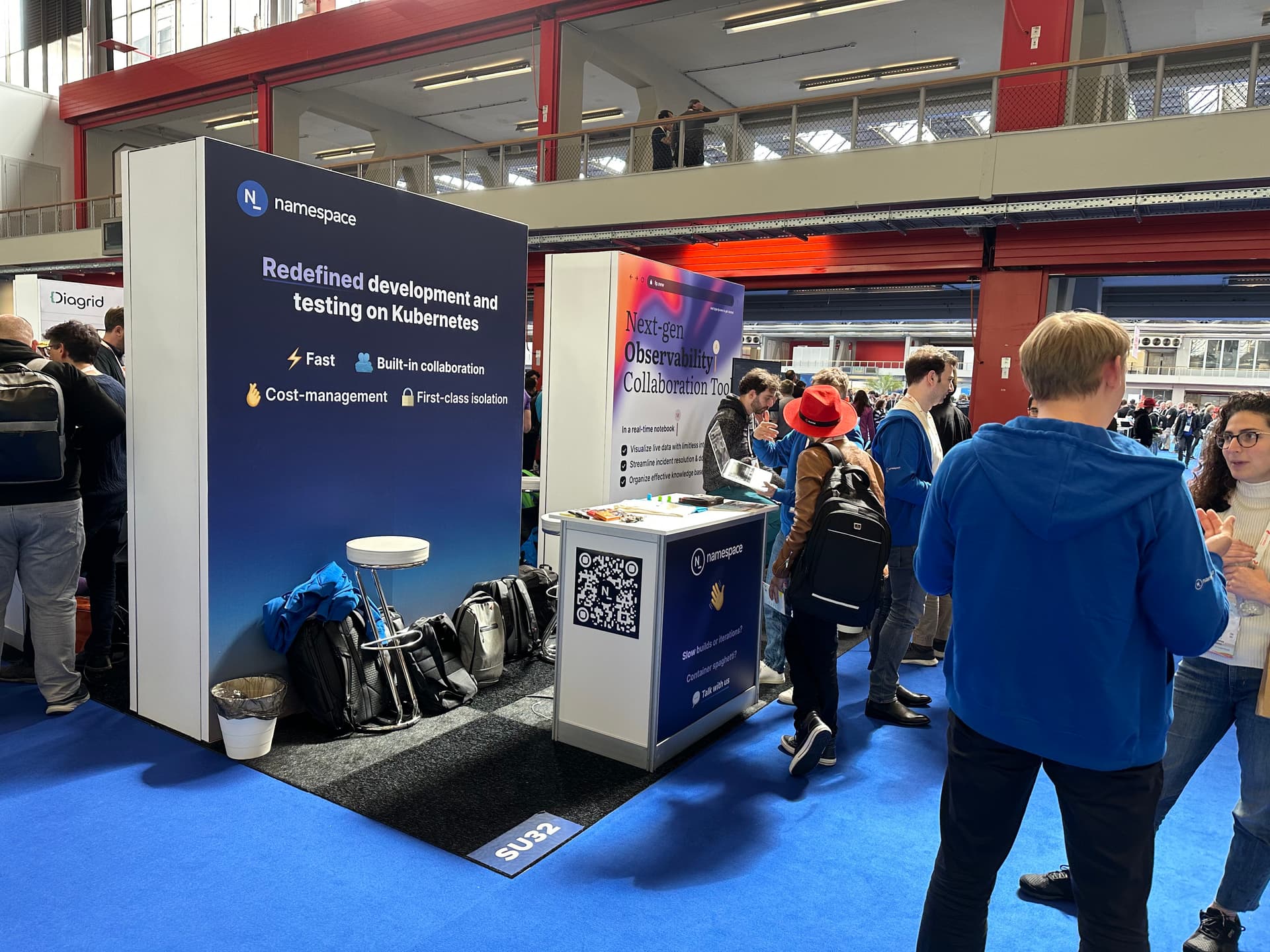When we started preparing for our first tech conference, we had many questions on where to spend our time and energy. We would have loved some guidance, so we are sharing our biggest learnings with you.
Do we need a booth?
With a team of ex-Googlers, ex-DOers, and ex-Amazonians, we've been around the block, building and managing some of the world's most complex infrastructure.
Yet, running a booth was a fresh challenge.
And we love challenges.
Let me tell you more about how we got there and our learnings. We wish we had known these things when we got started; hopefully, they help you when you're preparing for your first conference.

Many decisions to take
We tried to get answers to our many questions and asked folks with prior experience to help us with topics around the booth setup, swag, additional requests for the booth (like faster internet or hardware add-ons), etc. We felt this should be easier and would have appreciated a blog post like this.
Let me elaborate on our decisions and assist you with your decision-making process. We got a good idea of what works for us by answering the following questions:
-
What do you want to accomplish with your presence at the conference? In our case, we wanted a customer segment we hadn't interacted with so far to understand that we were also in the market. We wanted to validate our product with them and learn the pain points they go through. For that, we needed face time with many potential users.
-
How much are you willing to spend on a lead? This question is more nuanced: Compared with other options available to talk with larger audiences, we felt that a budget of $50 per engagement with what could potentially be the "right audience" is reasonable. That would mean roughly 150 leads for a booth to pay off.
The answers to those two questions led us to the decision to get a booth.
We brought in the whole team (six at the time) to benefit from interacting with potential users. CNCF has sponsorship opportunities for Startups, setting a booth's price at roughly 8k. Taking the Linux Foundation membership aside (which you still need to pay for), the cost for six people was similar to what we would have paid with individual tickets.
With 16k USD spent on the booth and CNCF membership, we now needed to figure out all the other details, which obviously impact the total amount such a conference will cost you.

Preparing is crucial
Big events like that require some upfront planning in different areas.
Travel and accommodation
-
Since multiple team members will be at the conference, arrival and departure times must be coordinated. We planned to be there one day before the conference to prepare onsite, see the location, and get a feel for the travel time from the hotel to the conference site.
-
To make coordination during the conference easier, it makes sense for all participants to stay in the same location. When booking the hotel, we optimized travel time from and to the conference venue and hotel prices.
Costs depend heavily on your location, the conference's location, and the number of people you bring. Travel and accommodation worked out very well for us, and we had a relaxed time onsite.
Team outfit
When running a booth, the team outfit is helpful for people to immediately pick you out of the crowd and also find you outside of your booth. We knew from other conferences that having a bright and visible color for t-shirts and hoodies is helpful. Depending on whether you have company clothes or not, you will have to add that to your expenses.

Giveaways
Our question was: Are those necessary, and at what cost? It is not a black-and-white answer, so let me explain our thinking. We decided to look for unique and valuable things that would stick with people. Going in, we had a cost framework on how much we would be willing to spend on giveaways.
What we ended up with:
- Cable organizers: We all like our cables neat and tidy.
- Adults t-shirts: To stand out, we made sure the t-shirts were of good quality and simple.
- Kids t-shirts: I struggled to find time to get something for my kids at every conference I participated in. It felt like the perfect giveaway for parents.
- Swiss chocolate: For those who wanted to bring only a few things home in their suitcase (or those with a sweet tooth), we got some Swiss chocolates and put stickers with a code to us on them.
We spent around 2500$ on giveaways. In summary, the giveaways were a good investment. Especially the cable organizers, being something different and valuable, were a hit.

Another exciting idea is to collaborate with other startups on giveaways or prices.
Booth build-up
- Booth location Booths are assigned on a first-come basis based on when you signed up for the conference. Looking at the conference map, some areas could see a decent influx of people. Some locations stood out: hall entrances (not where the Startup booths are), conference room entrances, and significant sites (t-shirt pickup, lunchtime, etc). Ultimately, we picked a location next to the t-shirt pickup, which worked well for us.
- Booth graphics It's excellent that KubeCon works with partners to handle the booth construction and printing. We only had to come up with the illustrations themselves. Ultimately, we did it ourselves, using a mix of product messages and some eyebrow-raising statements. Our goal was for folks to come and ask us about them. We were happy with how they turned out.
- Booth screen You can rent a screen for your booth that allows visitors to see whatever you share. We decided not to have a screen because we wanted to keep valuable booth space for personal interactions. Other booths have incorporated screens into their live demos, which would be interesting to try next time.
- Booth internet + power We were surprised that you had to pay extra for wired internet (and let me tell you, it’s not cheap!) and additional power sockets. We wanted to demo without being subject to Wi-Fi challenges. When asking around, we got the feedback that Wi-Fi performance is enough. So we took a bet and decided not to get wired internet. It worked out well, and we were happy with that decision.
- Logistics You can send giveaways, team shirts, or additional booth setups to the conference location beforehand. Make sure you check the dates by when the things have to arrive. We didn’t need that.
You can spend a lot of money on all those essentials and extras or keep it to a minimum.

Goal setting during the conference
It is challenging to measure the ROI of a conference. Without clear goals, how do you know how well you're doing? And what goal should you set?
It's hard to set a number because you don't know if you're under- or over-shooting, but having a target is vital so you can work towards it and adjust if needed.
Even though we didn't have any data to back our expectations, we said that our team should have had 200 conversations by the end of KubeCon.
We ended up hitting nearly 200 people on the first day!
What played in our favor was the location. There were queues of people at the official conference t-shirt pickup, which gave us plenty of visibility and time to talk to people.
Days two and three were much less busy than day one, meaning you must get it right on day one.

Our learnings
- Preparation is crucial: Make sure you don’t have to spend time figuring out things that could have been done before. For example, how to get onsite, have enough power plugs etc. There will be enough unknowns already.
- Set measurable goals: You can't improve what you can't measure. Aim for a specific number of leads or engagements.
- Manage your energy: Conferences can be exhausting, and talking to people the whole day even more (especially for introverts like me). We set rotation schedules with breaks, ensuring everyone had time to recharge. For that, it was necessary to have six people there so we could rotate.
- Embrace the chaos: Plans are crucial, but so is the ability to adapt when things go awry. For example, we had no flyers and realized people were asking for them. Within a few hours, we had a pamphlet designed, printed, and ready to be distributed onsite.
- Engage with as many customers as possible: First-hand interaction is critical for every team member. It's exhilarating to see what resonates with customers and what doesn't. We all learned a couple of insights that we could take away.
- Build team energy and exchange: We touched base at the start and end of the day to prepare and recap what we had learned. And to reinforce what was working or not.
- Spend your money wisely: You can pay for many add-ons, but in the end, some make more sense than others. For example, we did not need the additional internet.
- Excitement does not mean conversion: Many people will be enthusiastic about your goals and mission, especially when engaging in person. But look for the ones that want to use your product.

Heading to Chicago
We have yet to validate our KubeCon investment fully, but we have seen enough to make a call that we should also be in KubeCon US 2023 in Chicago.
Based on what we've learned, we'll do a few things differently there:
- We'll be more prepared with written-down material that folks can take with them (e.g., pamphlets). We had QR codes in the booth for folks to scan, but a good percentage asked for some material to take with them. And for the cost, it's a no-brainer.
- Be more prepared to broadcast. Sometimes, engaging with a single person makes sense, doing a demo and a walkthrough of the product in a personal way. Some folks, however, don't want to engage but would be happy to observe; we were not prepared for them and will try to be by having a larger screen for demos next time.
- Prioritize and reward high-value interactions. Only some people will come to your booth because they have a problem they want to solve, especially if you have nice swag. Something we learned with Replicated is to reward high-value engagements. In one of our conversations, they handed me a "VIP swag bag", which felt extraordinary.
Hope to see you there!

